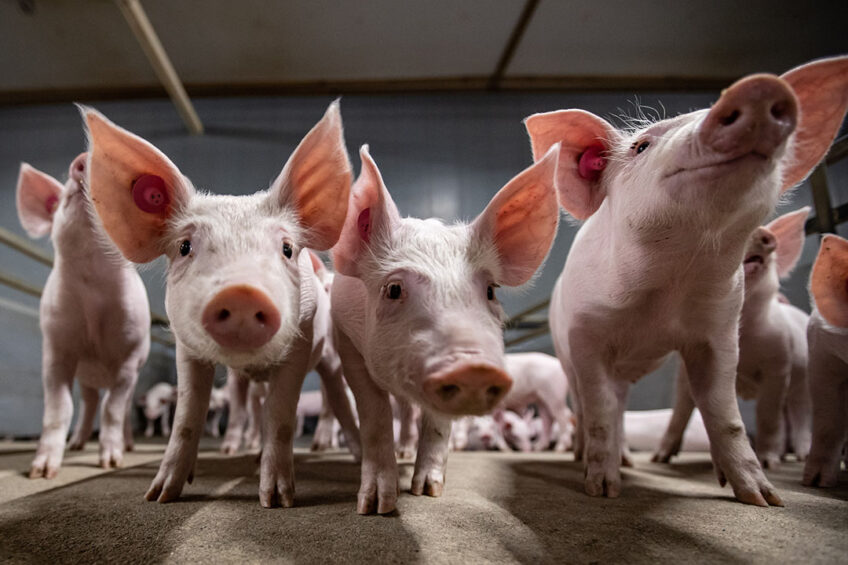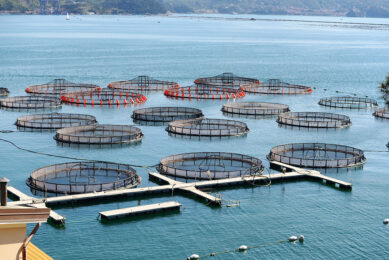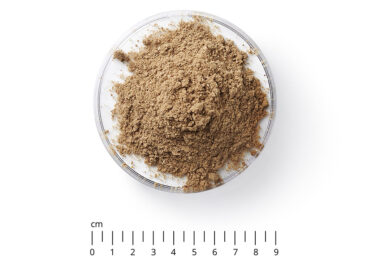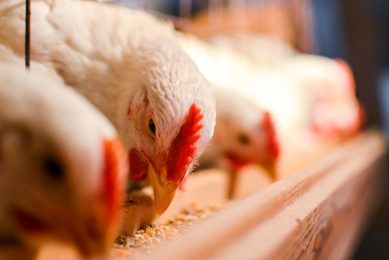Assessing the nutritional value of PAPs

Processed animal proteins (PAPs) can once again support the feed industry by providing much-needed alternative sources of protein. PAPs could be key in increasing circularity in animal feed, but should their nutritional value be re-evaluated?
To help answer this question, Roger Davin of the R&D department of Schothorst Feed Research (SFR) presented the results of digestibility studies conducted to validate the need for re-assessment of the nutritional value of new PAPs of different origins. Davin presented the results through a webinar as part of the main project of the public private partnership (PPP) Circular bio-economy, which is a consortium of various companies and knowledge institutions. The webinar held on 31 January 2023 was chaired by Gert van Duinkerken of Wageningen University and Research. The primary goal of the PPP project is to achieve optimal resource use efficiency and the use of co-products and residuals in a safe and sustainable way. A circular economy is based on closed nutrient cycles and minimal loss of raw material or biomass, hence the importance of high utilisation efficiency.
PAPs back in the EU: What does that mean?
As the use of PAPs is again now allowed in the European Union (EU), what exactly does this mean? In brief, the idea is that PAPs of poultry origin for pigs and PAPs of pig origin for poultry now have no restrictions (this has not been the case since they were imposed in 2001).
Reasons for PAP ban
The primary reason for these restrictions was to contain the spread of Transmissible Spongiform Encephalopathies (TSEs), mainly Bovine Spongiform Encephalopathy (BSE); which had been associated with the presence of infected material in animal feed resulting from the recycling of proteins of animal origin in feed. In addition, studies show that the EU had witnessed epidemics of foot and mouth disease, as well as swine fever, that were related to the presence of animal by-products in feed.
However, the rapidly increasing demand for sustainability and a circular bioeconomy have brought about a major shift in the mandate and priorities of legislators, leading to the recent re-entry of PAPs in the poultry and pig feed sectors.
Digestibility of PAPs in pigs
According to study results presented by Davin, variations of PAPs in terms of composition and digestibility could be due to different sources, for example, meat, bones, feathers and blood, or processing methods.
Crude protein
The trials conducted by SFR focused on the digestibility of crude protein in different PAPs (poultry meal, feather meal, and blood meal) in weaned and grower-finisher pigs. Summing up the results of the studies, Roger Davin highlighted the fact that the digestibility of poultry PAPs is in line with feeding table values of mixed species PAPs products, but variations observed among the different poultry meal PAPs need to be accounted for. For example, poultry meals had different ash content, which might affect amino acid patterns.
Feather meal
Compared to the feeding tables, the CP and AA digestibility values of feather meal were relatively low, suggesting the need to consider the effect of different origins and processing methods.
Blood meal
For blood meal, it was emphasised that differences in AA profiles between poultry and pig blood should be considered when determining nutritional values.
Impact on gut
Looking at protein kinetics, the results showed differences in the digestibility values of the individual PAPs on each gut segment. “This implies different effects on gut health, especially in young animals,” said Davin. However, he concluded that new PAPs may be used in the EU on a species-specific basis and they therefore require a specific entry in feed tables.
Impact on weaned & grower-finisher pigs
Explaining the results of a follow-up study in weaned pigs and grower-finisher pigs, where 7.5% soya bean meal (SBM) was replaced by different poultry PAPs, Roger Davin highlighted that in weaned piglets, diets containing poultry meal with low ash content had similar performance to a SBM diet (control), whereas diets containing poultry meal with high ash content or feather meal had a worse performance than the control diet. However, in grower-finisher pigs, diets containing PAPs performed similarly to the control group (fed with SBM only). The differences in performance during the weaner period were attributed to the fact that grower-finisher digestibility values were used in weaner pigs as well, hence the suggestion to use a different digestibility ratio for weaned piglets.
Digestibility of PAPs in broilers
As an example of pig PAPs in poultry diets, Roger Davin elaborated on a study conducted by Wageningen Livestock Research, part of Wageningen University and Research. In this research, porcine meal varying in ash content and coarseness was compared with monocalcium phosphate (MCP) (control) as phosphorous sources in broiler diets. A summary of the results showed that the P digestibility of porcine PAPs varies between 90 and 94%, while for MCP it was 91%. Although particle size did not result in significant differences in P digestibility, it was apparent that coarser particles seem to result in greater variation. On the other hand, the processing method of the PAPs did not affect P digestibility.
The future of PAPs
Animal by-products can be produced from a variety of sources in terms of animal species and types of tissue and are processed in multiple ways. This diversity of materials is monitored by only a few legally permitted methods the range of applicability of which is maximised. In line with this, in his presentation, Roger Davin concluded that new PAPs may be used in the EU on a species-specific basis and require a specific entry in feed tables.
In a recent study conducted by researchers at Wageningen Food Safety Research – part of Wageningen University and Research – relating to the legal principles and general directions towards full sustainability and circularity, the following points should be considered:
Safety,
Opportunities for monitoring the origin of the animal by-products (in most cases the source of the material, or the process when relevant), and,
Options for management (physical separation of streams, either as pure material or as an ingredient in compound feed).
The researchers added that in all cases the required safety – in terms of prions, zoonoses, other microbiological hazards, and accumulation of chemical hazards – must be proven to be at a sufficiently high safety level according to the total set of the applicable legislation.











